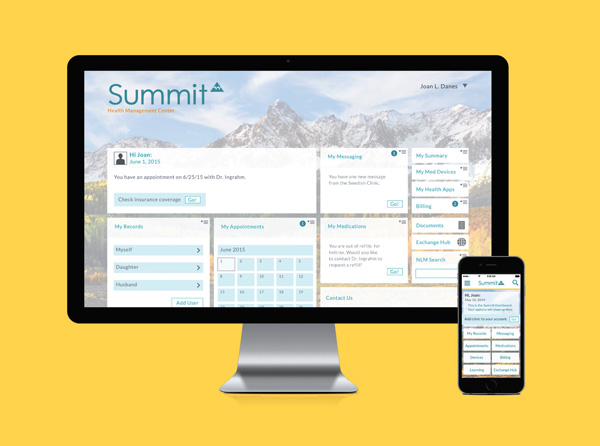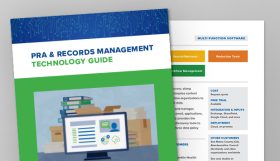 Summit is a national health management system that is comprised of secure data hubs with accounts for both patients and medical professionals. This concept project involved extensive industry, market, and user research as well as user interface design for a patient portal that includes an exchange hub for obtaining and disclosing medical records and communication with doctors, hospitals and clinics.
Summit is a national health management system that is comprised of secure data hubs with accounts for both patients and medical professionals. This concept project involved extensive industry, market, and user research as well as user interface design for a patient portal that includes an exchange hub for obtaining and disclosing medical records and communication with doctors, hospitals and clinics.
What you’re looking at
UI for Mobile and Desktop, User Interviews, a Research Paper and Summary with Infographics (page examples from summarized version), a User Survey, and User Personas

With consideration for how electronic records work, the various types of electronic records, analyzation of the benefits and issues of current systems and the agenda of the federal government to adopt a universal health records system in mind, an ideal universal system and patient portal has been designed. The Summit system includes the following:
- A national system of secure data hubs with patients accounts
- Both patients and providers are connected to the system
- Patient control over who has access to their data
- Data is encrypted while being transferred and stored
- Patient opt in to allow for anonymous data to be given for research purposes
- Access to and ability to fill out all necessary authorizations in the Summit app
- An app for patient access that is also a patient portal for scheduling appointments, receiving new lab test and imaging results, communicating with medical team, receiving health summaries, device syncing, managing medications, and managing family member data and access for authorized representatives

A basic click through prototype of the exchange hub can be viewed here
PROCESS
User Interviews
The purpose of these interviews was to gather insights from medical professionals that would interact with the app. Interviews with five medical professionals (2 physicians, 1 physician assistant, 1 nurse, and 1 clinical therapist) provided insight into medical apps, patient portals and the possible implementation of a universal system in the United States. Here are the key points from these conversations:
- Electronic systems help medical professionals with time management but not all clinics and hospitals have systems.
- Not all systems work with each other. There is still a disconnect.
- Current systems do not have complete records and it is still timely and complicated to get a patient’s complete history
- The major concern is patient confidentiality and security. The bigger and more complex a system is, the more difficult security is.
- Patient access to all their info can be helpful for the ease of communication
- Research has already benefited from electronic databases. A universal system could facilitate more data retrieval.
Further Research
Because of the amount of research needed for this project, I wrote a research paper for referencing both the need for the system and of the system. This includes research about benefits and setbacks of medical apps and patient portals already in use, opinions from the medical community and patients on applications being used and the possibility of creating a national system, and the steps that government has already taken in consideration of creating a national system. The paper was written with APA style citations and includes a designed full report and a summary which includes a few infographics.
Check out some of my pages below. Please contact me if you are interested reading the full report.








